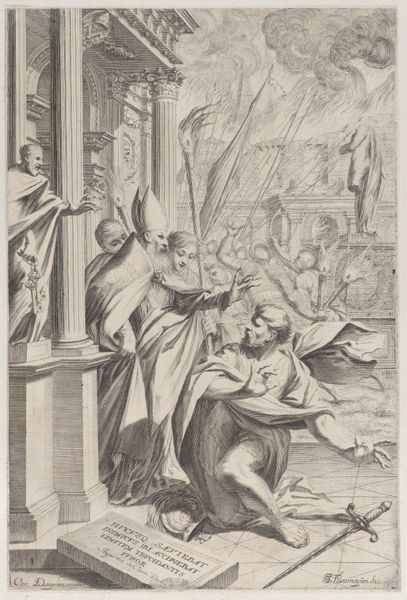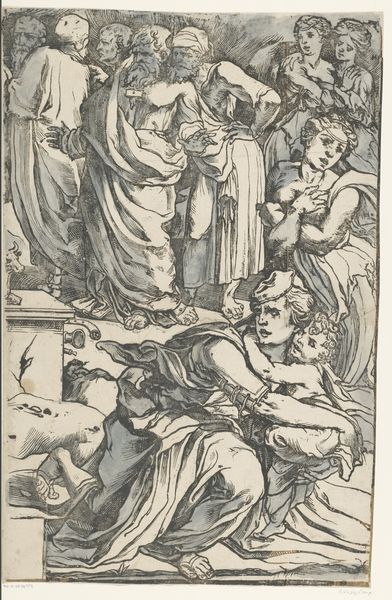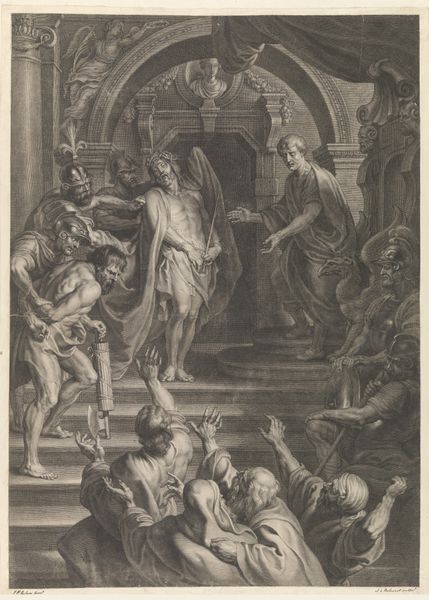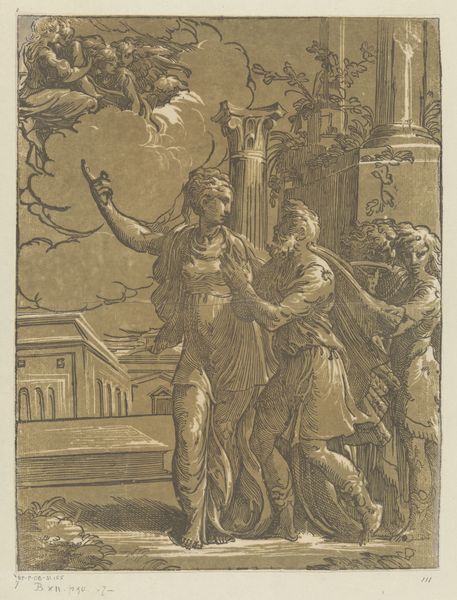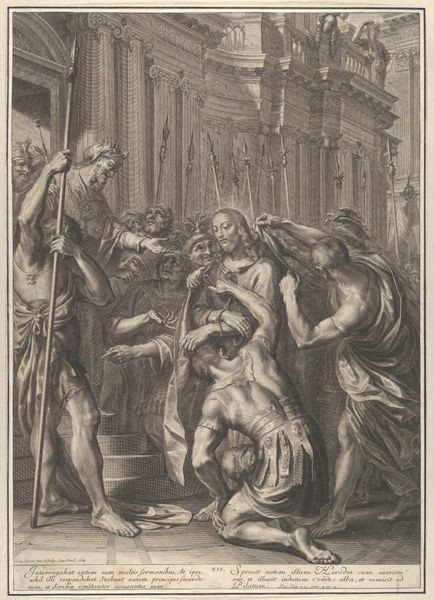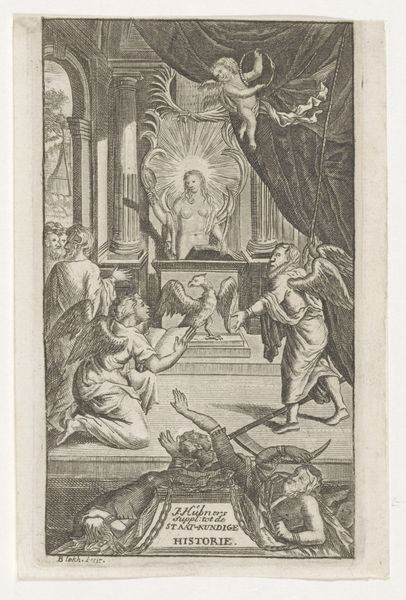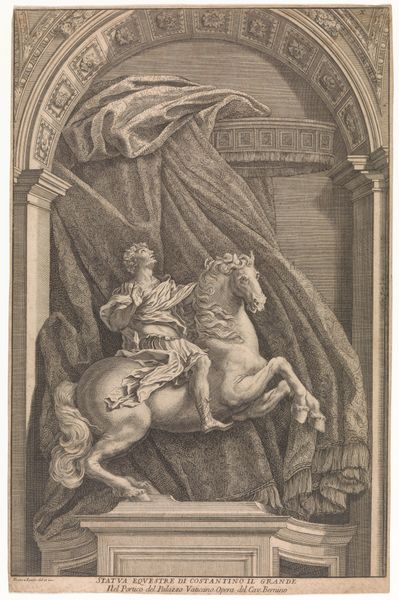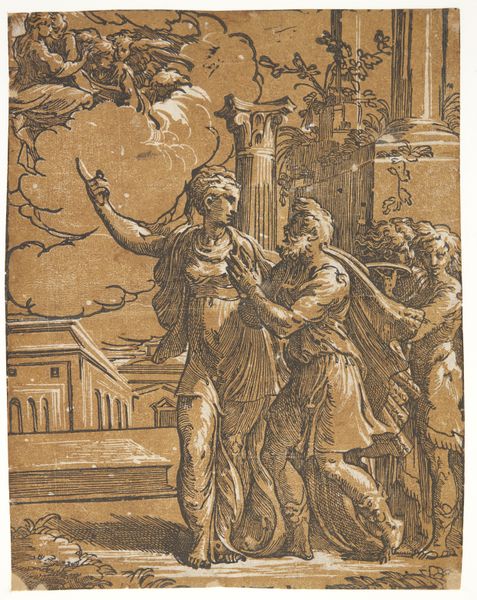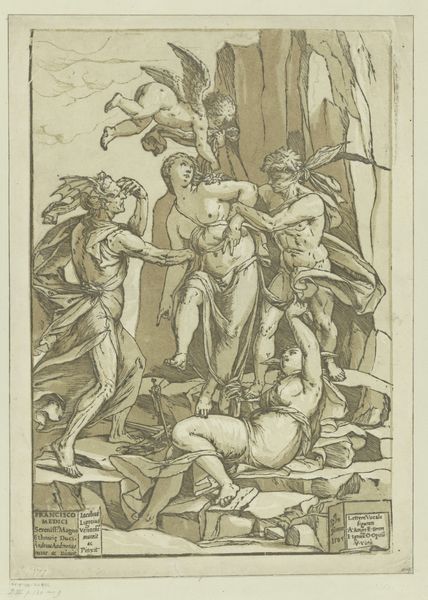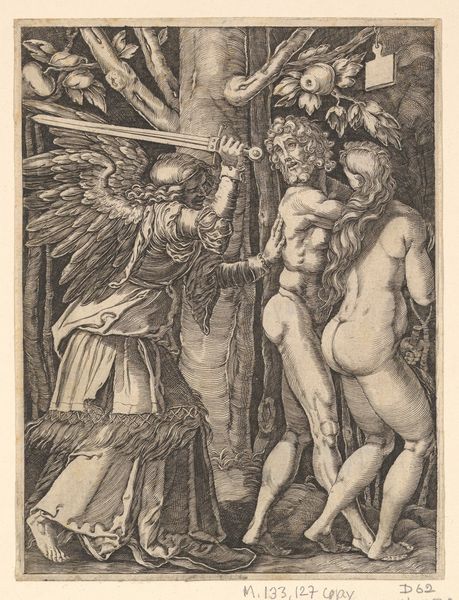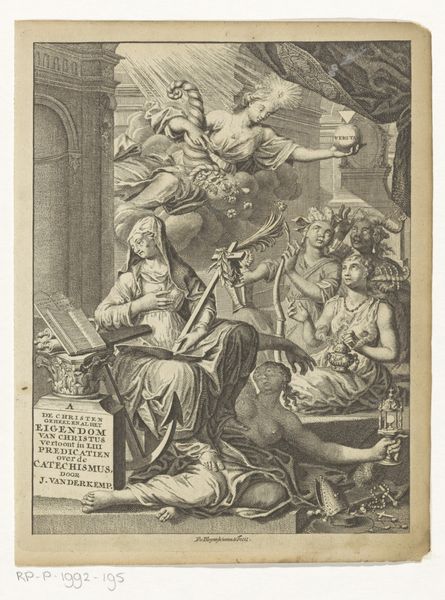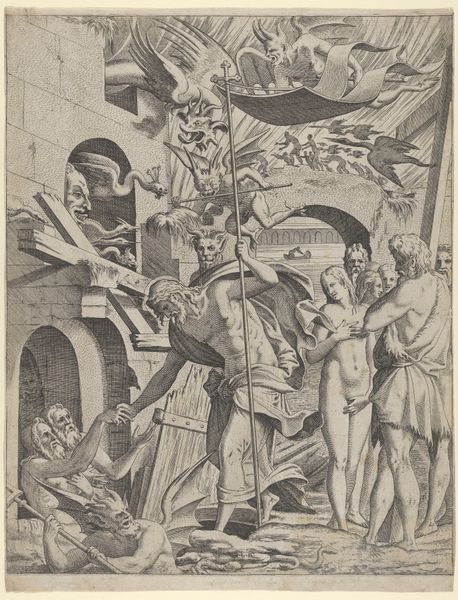
drawing, paper, engraving
#
drawing
#
allegory
#
narrative-art
#
figuration
#
paper
#
11_renaissance
#
momento-mori
#
13_16th-century
#
line
#
portrait drawing
#
history-painting
#
northern-renaissance
#
engraving
Copyright: Public Domain
Hans Burgkmair created this engraving titled "Lovers Surprised by Death," now in the Städel Museum. The composition, dominated by sharp contrasts of light and shadow, evokes a palpable sense of dread. The architectural backdrop, meticulously detailed, provides a rigid framework against which the drama unfolds. Burgkmair masterfully uses line and form to convey complex ideas. The female figure, wings spread in horror, is rendered with dynamic lines that emphasize her emotional turmoil. Her gesture of desperation contrasts sharply with the static, skeletal figure of death, who is drawn with an unsettling calmness. The contrast here is critical. The lovers, caught in the act, are symbols of earthly pleasures abruptly interrupted. The allegorical narrative, rendered through precise lines and carefully modulated tones, invites a contemplation on mortality and the transience of human pursuits. Notice the skull, a memento mori, subtly placed in the architecture. This element serves not only as a reminder of death's inevitability but also as a structural component that reinforces the engraving's thematic concerns.
Comments
stadelmuseum about 2 years ago
⋮
Death suddenly attacks a couple of lovers in the midst of a peaceful, classic city architecture. The dramatic escape attempt made by the young woman in violent movement is of Italian character; the nightmarish drastic force with which death attacks its victims is more in keeping with Northern traditions. But this sheet is also remarkable for technical reasons. Only three years earlier, in 1507, the Dutch wood engraver Jost de Negker had invented the chiaroscuro (Clair-obscur or Chiaroscuro). By printing several differently coloured "Holzstocke" (printing plates of the woodcut) in a certain order on top of each other, until then unknown painterly effects could be achieved. This process required very precise planning and an extremely careful execution. Hans Burgkmair from Augsburg, whose graphic work consists almost exclusively of woodcuts, worked with the chiaroscuro technique as early as 1508. Burgkmair himself had executed the drawings for "Lovers Surprised by Death", Jost de Negker cut the woodblocks.
Join the conversation
Join millions of artists and users on Artera today and experience the ultimate creative platform.

